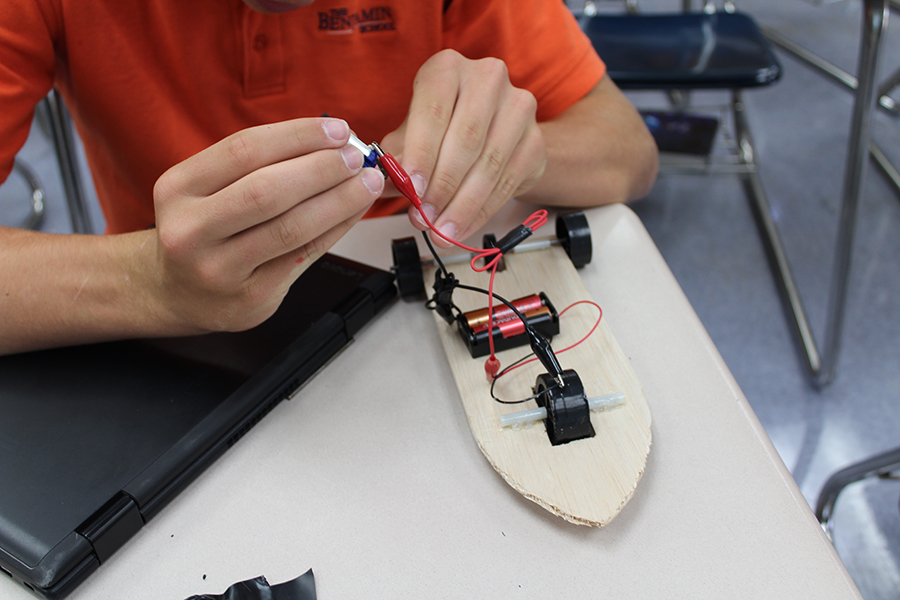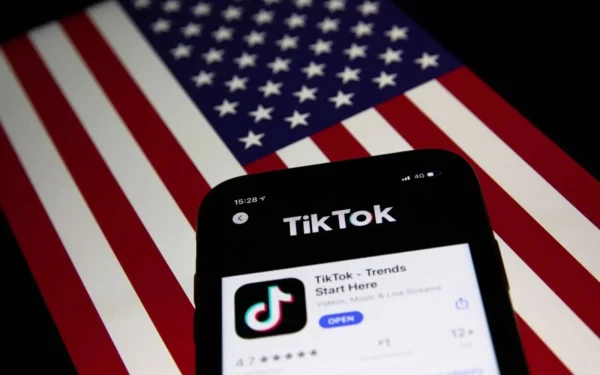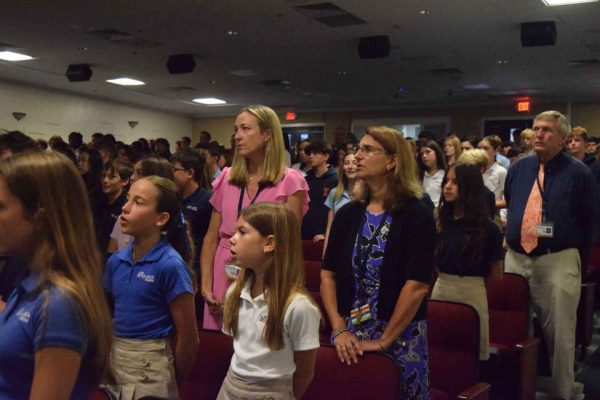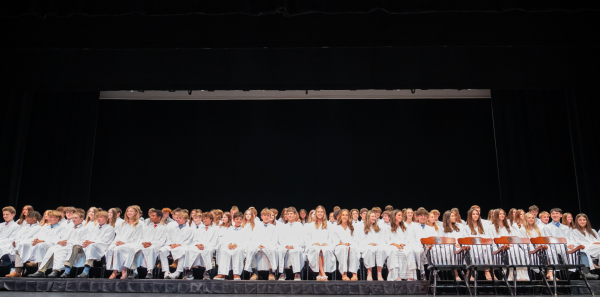Students Learn About Solar Energy Via Car Creations
Eighth grader Michael Edwards works on his solar-powered car.
Chalk up another cool project for the science department. Eighth-grade science teacher Ms. Sara Featherston recently had her students build solar power cars.
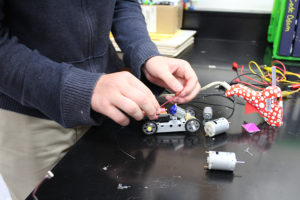
Ugnius Numas attempts to connect a wire to the motor of his vehicle.
“We are learning how to use renewable resources and the benefit of it,” said Featherston. “The students are given a challenge to build a car that [runs] on solar power. The goal is for them to learn how to collaborate with their peers, learn about gear ratios, and also learn how solar power actually works.”
Featherston supplied the materials to build the cars, but it was up to the students to put it all together and make the cars work.
“I supply them with the main things such as the wheels, axles, engine, solar cells, and gears,” she said. “After that, they are on their own, and they can research what to use to make [the cars] work. They also get extra credit for using recycled materials. It was a great experience for the students, and they had a lot of fun.”
The solar panels the students used are actually photovoltaic (PV) cells which convert sunlight to direct current electricity. The students used solar panels that did not have to be charged, but could be used immediately. The inverter, a device made to transfer energy, converts direct current into alternating current (AC) electricity. This powers the motor and allows the cars to run.
“I liked figuring out how to wire [the car] and make it go in a straight line and prevent it from doing donuts,” said eighth grader Tommy Rose.
While this was a fun project, it also taught students about the benefits of solar power – a clean, renewable energy. Solar power is being used more today because many nations are trying to harness
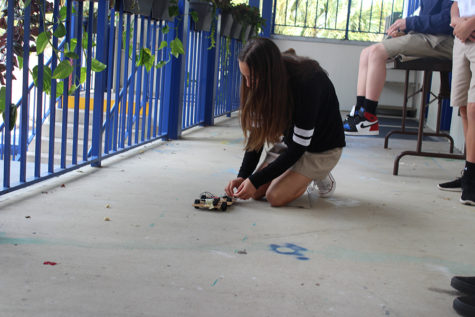
Eighth grader Sydney Fox tests out her car on the landing in front of the science rooms.
renewable energy resources. This has several benefits: it’s more cost efficient, is better for the environment, and stimulates the economy by creating jobs in the renewable energy field. According to insideclimatenews.org, the Pulitzer Prize-winning news organization dedicated to covering climate change, energy, and the environment,“one million solar power installations now dot America’s rooftops and landscape, an achievement being hailed as a milestone by advocates of solar energy. There were just 1,000 such projects at the turn of this century, and only six years ago, going solar cost twice as much. Still, those one million installations deliver just 1 percent of electricity in the U.S., the world’s second-largest energy consumer after China.”
So while solar power still doesn’t account for much of America’s energy consumption yet, the students at TBS are learning about its benefits. It’s estimated that by 2020, over 4 million homes will be powered by solar energy and that one million Americans are switching to solar power every year.
Of course, the students’ project couldn’t just be about facts – there had to be some fun involved, too. So, after completing their cars, the students were allowed to race them against one another, adding some competitive excitement to the project. “We raced our cars at the upper basketball courts,” said eighth grader Lucas Cotronakis. “The first race was from out of bounds to the three point line, and the second race was the whole length of the court. Our car wasn’t the fastest so we didn’t do great, but we didn’t do badly [either].”
By being introduced to the possibilities of solar power, today’s eighth graders may be tomorrow’s leaders when it comes to creating clean, renewable energy that is both cost-effective and environmentally responsible.
